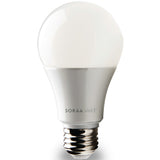8 Tips to Reduce Home Energy Costs
Posted by Nick on for ProLampSales
Most people view their electric bill as a fixed cost, but having such a complacent view could cost you hundreds if not thousands of dollars per year. You can significantly reduce your expenses and help the environment by making just a couple changes, no matter if you rent or own your current residence. With the following eight quick, easy tips you will be on the fast track to actively reducing your home energy costs.
- Do some research to see if there are other, cheaper electric providers in your area. If possible, compare different offers and/or payment plans from the companies and choose the one that is the cheapest per kilowatt hour. Unfortunately, due to the monopolistic nature of electric companies this may not be an option if you live in a small town or a city that is geographically isolated.
- Find out if there is an off-peak time of day when the usage rate is lower and utilize it. This time should be used for your most demanding electric needs such as running the washing machine, the dish washer, or the stove. However, watch out for special metering hardware charges to track usage during those times that may outweigh any financial benefits.
- Instead of doing a costly overhaul of your HVAC system, consider smaller changes. According to an expert on consumer savings, your home's HVAC is the biggest energy hog making up approximately 43% of your total electric bill. However, just by taking the small steps of changing air filters and sealing cooling ducts, you can reduce energy costs by 20%.
- Consider alternative options when heating and cooling needs are the highest. To no surprise, consumer electric bills usually spike during the winter and summer months. Instead of reaching to change the thermostat, grab a heavy blanket for warmth or open up the windows for air circulation to cool down. At the very least, don't pay for increased heating or cooling when you are not home.
- Install a programmable thermostat that lets you preset temperatures based on actual use. We recommend investing in the latest high-tech designs that automatically adjust temperatures after learning your living patterns. Programmable thermostats run from $24-$250 but the average savings of $180 per year nearly pay for even the most high end ones that can be controlled by your smart phone.
- Get in the habit of unplugging devices after using them or unplug power strips when leaving home. Homes are filled with plugged-in gadgets that use power even when turned off. The biggest energy suckers are items that have a transformer, the small cube on the end of the cord, such as video game systems, desktop computers, and printers. This small act can save an average of 5%.
- Buy energy efficient devices and take advantage of the corresponding tax credits and rebates. When purchasing energy consuming items like large appliances check if there is a label like Energy Star. Energy Star products are independently certified to save energy without sacrificing features or functionality. The Energy Star website offers a comprehensive Product Finder, Store Locater, and Rebate Finder.
- Buy energy efficient lighting products and find the most effective places to put them. Replace incandescent bulbs or halogen lamps with either CFLs or LED bulbs for maximum energy efficiency and electricity cost savings. Place these energy efficient lights and light products in locations that provide maximum effectiveness. Lastly, rooms finished in lighter colors reflect natural light from windows and skylights resulting in a brighter space with less electric lighting.
- Posted in Energy Efficiency
Featured Products (View All)
0 Comments




